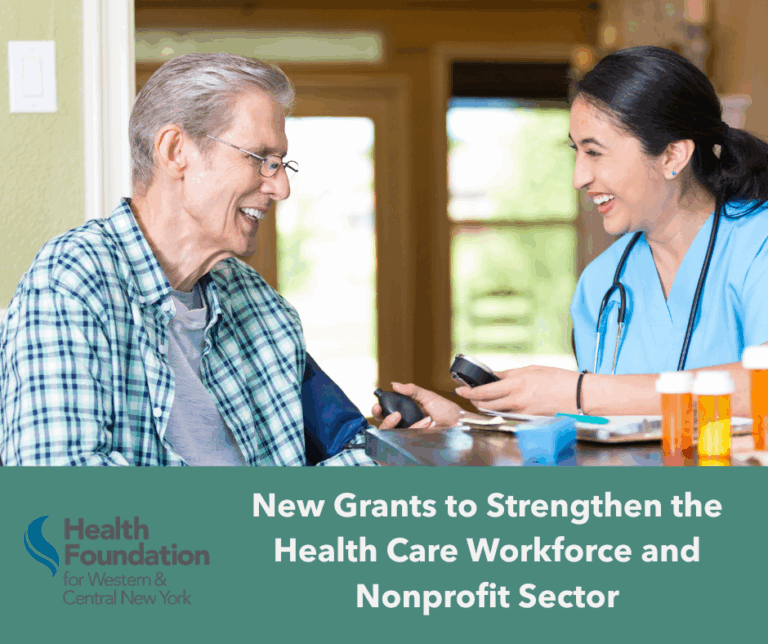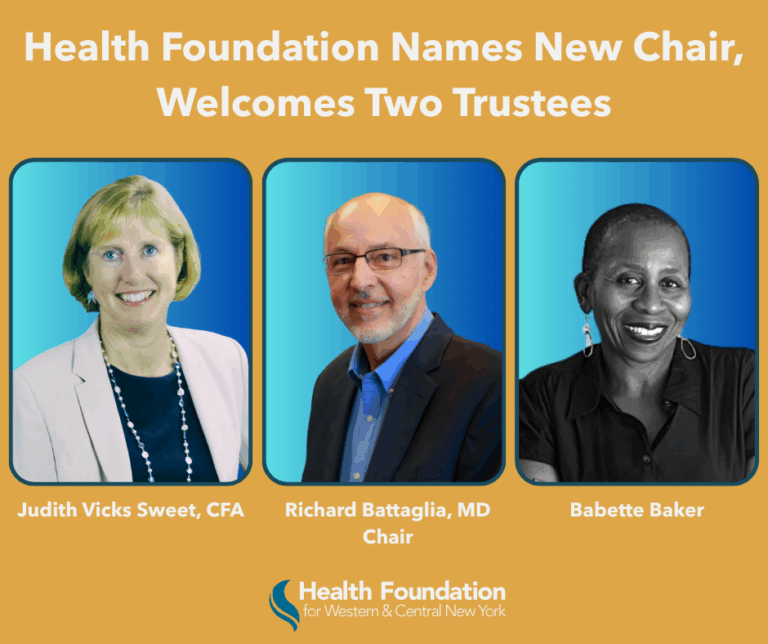In October 2020, the Health Foundation for Western and Central New York announced a new vision statement and strategic plan that will guide the work of the Health Foundation through 2025. An extensive planning process that began in 2019 has resulted in a new organizational vision statement, as well as three long-term goals and corresponding mid-term goals to pursue that vision. Our new vision is a healthy central and western New York where racial and socioeconomic equity are prioritized so all people can reach their full potential and achieve equitable health outcomes.
The Health Foundation’s mission will continue to be improving the health and health care of the people and communities of western and central New York. The plan also reaffirmed the Health Foundation’s commitment to young children impacted by poverty; older adults; and the community-based organizations that serve them.
Our new vision will be pursued through a set of long- and mid-term goals. This is an overview of why we chose a specific goal, and how we plan to pursue it.
Midterm Goal 5: Communities and health systems are working collaboratively to become age friendly.
As one of the only funders in the region with a specific focus on aging, the Health Foundation has always taken a lead in developing and advancing programs and policies to support healthy aging. We believe that healthy aging and maintaining a high quality of life is possible for all older adults, and that older adults are valued and valuable members of our community. Creating an age-friendly New York State will require collaboration across sectors, working to engage businesses, city planners, and healthcare systems in each community.
Age-friendly communities are about much more than making buildings wheelchair accessible and having senior centers (although those are important too!). Age-friendly communities are committed to engaging older adults and providing opportunities for them to be full, vital members of the community, and recognizing that older adults have a lot to contribute, if given the chance. Older adults are often unintentionally excluded from community events because of harmful stereotypes about aging and assumptions about their capabilities and interests. Ageism is an equity issue, and it harms us all. The Health Foundation is committed to promoting anti-ageist language and lifting up examples of healthy aging, and supports efforts to advance age-friendly communities and health systems.
BACKGROUND
Healthy aging, like other health outcomes, is driven primarily by what happens outside the health care system. Social determinants of health (such as safe housing, community resources, public transportation options, green spaces, social support, etc.) continue to be the strongest predictors of longevity and quality of life as people age. Some of these social determinants, such as access to services, transportation, and social network have long been identified as potential triggers of decline for older adults. The Age-Friendly movement focuses on the social determinants of health that are most relevant for older adults as well as ones that are more mutable.
There are eight domains in the Age-Friendly framework that fall into three primary focus areas: the built environment, the social environment, and community and health support.
Many municipalities that are working to become age friendly have placed a great deal of emphasis on the built environment and improving accessibility, such as making sure that sidewalks are safe, even, and include curb cuts for ease of access. This extends to transportation, housing and outdoor spaces and buildings; for each of these, criteria heavily emphasize the need for accommodating older adults with a range of needs and abilities. Although this is the work that is most often associated with the age-friendly movement, it only accounts for a small portion of the overall framework.



